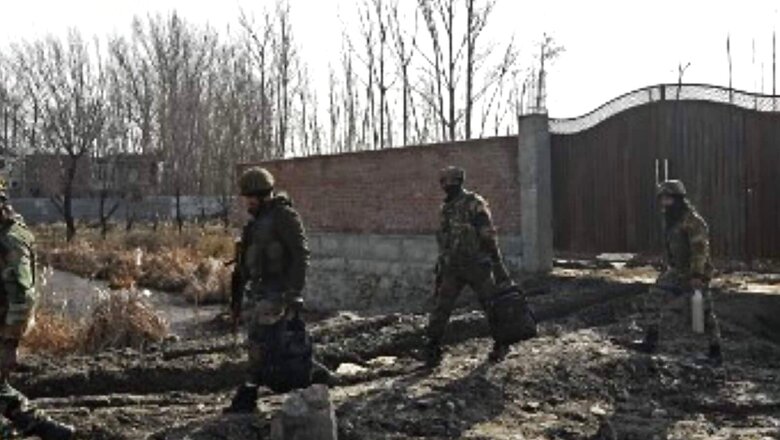
views
More than 900 over-ground workers (OGWs) of Lashkar-e-Taiba (LeT), Jaish-e-Mohammed (JeM), Al-Badr and The Resistance Front (TRF) were taken under detention in Kashmir, in a major crackdown amid recent spate of militant attacks on civilians in Kashmir.
As security forces attempt to understand and correlate the working model behind these targeted killings by joint interrogation of these over-ground workers by different investigating agencies, here’s a lowdown on who they are, how they are classified and what they do.
How are Over-Ground Workers Classified?
Overground workers (OGWs) are those that provide logistical support, cash, accommodation, and other facilities to militants or terrorists in Jammu and Kashmir. The police classify an OGW as “anyone who supports the insurgents.” A person who provides a safe house, passage, information, or acts as a messenger for suspected militants is immediately labelled as an OGW by the authorities, according to reports.
Army Chief General Bipin Rawat stated in February 2016 that anyone who seeks to rescue militants or interferes with an anti-militancy operation will be considered “overground workers of terrorists” and will suffer harsh punishment, according to a report by ThePrint.
What Do OGWs Do?
According to the Police Department’s Crime Gazette, OGWs “act as eyes and ears of the underground militants”, arranging hideouts, transporting weapons from safe havens to places where militants plan to carry out strikes, keeping an eye on security forces’ movements, distributing separatist literature, and engaging in hate campaigns against security forces.
Their main responsibilities also include making false accusations of sacrilege, molestation, and beatings of young and old civilians by security personnel, as well as disseminating the militant commanders’ “virtues” and “righteousness.”
“… if militants are seen as fish, OGWs are the water that ensures their survival,” IANS had quoted a top police officer as saying.
The report by IANS states that OGWs are militants without weapons and can even be deadlier than them as they manage travel and other logistics for the active militants.
ALSO READ | In Major Crackdown, Over 900 Over-Ground Workers of LeT, TRF Held in Kashmir After Attacks on Civilians
“Hizb-ul-Mujahideen and Lashker-e-Toiba have a well-established network of OGWs, which is sustaining militancy in Kashmir. Militants act on the advice and orders of their mentors and OGWs,” he said.
“If OGW networks are shattered, militants will be sitting ducks. OGWs have been lined up in such a manner that they help and guide the militants to our disadvantage. We want to take out the water from the pond. The fish will automatically not survive,” the report had quoted the officer as saying.
Classification of OGWs?
According to a report by the Centre for Land Warfare Studies (CLAWS), an autonomous think tank on strategic studies, OGWs can be put in six categories:
1) OGWs for Logistic Support (OGWLS) to Strike teams.
2) OGWs managing Funding (OGWF).
3) OGWs providing Ideological Support (OGWIS).
4) OGWs providing Radicalisation Support (OGWRS).
5) OGWs for Recruitment of Terrorists (OGWR).
6) OGWs generating negative Perceptions and Sentiment amongst the Awaam (OGWPS).
Read all the Latest News , Breaking News and IPL 2022 Live Updates here.


















Comments
0 comment